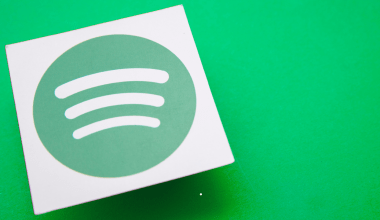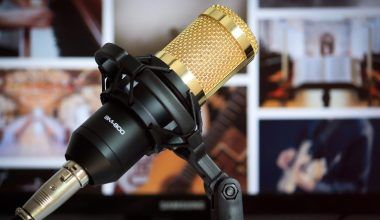For small artists, breaking into the music industry can feel like climbing a mountain with no map. It’s challenging, overwhelming, and sometimes downright discouraging. But there’s a secret weapon many artists overlook: playlisting. If you’re wondering how playlisting can transform your music career, keep reading. This guide will simplify the process and show you the path to getting your music heard by thousands—even millions.
What Is Playlisting?
Playlisting is the practice of curating a collection of songs, often grouped by genre, mood, or theme, on platforms like Spotify, Apple Music, and YouTube Music. These playlists are created by individuals, record labels, or platform curators. For small artists, landing a spot on the right playlist can be a game-changer. It’s like getting a golden ticket to reach new listeners without needing a huge marketing budget.
Why Playlisting Matters for Small Artists
In today’s digital age, playlisting is more than just a trend; it’s an essential tool for growth. Here’s why:
- Increased Visibility: Playlists can introduce your music to listeners who might never have discovered it otherwise.
- Algorithm Boost: The more plays your songs get from playlists, the more likely streaming platforms’ algorithms will push your music to a wider audience.
- Credibility: Being featured on popular playlists can make your music seem more legitimate to fans, labels, and industry professionals.
Now that you understand the importance, let’s dive into how you can get started.
Building Your Foundation for Playlisting Success
Before you aim for top playlists, you need to have a solid foundation. Here’s how:
1. Polish Your Music
First impressions matter, and your music needs to sound professional. Invest in good production, mixing, and mastering. Streaming platforms are filled with talented artists, so make sure your tracks are ready to compete.
2. Set Up Your Artist Profile
On platforms like Spotify, an engaging artist profile can make a huge difference. Add a bio, professional photos, and links to your social media. Don’t forget to update your playlists and highlight your releases.
Engage with your fans on Instagram, TikTok, or Twitter. When playlist curators see an active fanbase, they’re more likely to take a chance on you.
Finding the Right Playlists
Not all playlists are created equal. Some are massive, boasting millions of followers, while others cater to niche audiences. Both can be valuable, depending on your goals.
1. Start with Independent Playlists
Independent curators often have smaller, more focused audiences. These playlists are easier to get featured on compared to the official ones managed by Spotify or Apple Music.
2. Use Playlist Directories
Websites like SubmitHub and PlaylistPush allow you to pitch your music directly to playlist curators. Some require a small fee, but the exposure can be worth it.
3. Do Your Research
Spend time finding playlists that align with your music style. Search for similar artists and see which playlists they’re featured on. Reach out to those curators with a personalized pitch.
Crafting the Perfect Pitch
Getting on a playlist often comes down to how well you pitch your music. Here are some tips:
- Be Personal: Address the curator by name if possible. Mention why your song fits their playlist.
- Keep It Short: Curators are busy. A few sentences about your song and a direct link will suffice.
- Show Your Work: Highlight any milestones, like social media buzz or other playlists you’ve been featured on.
Leveraging Playlists for Long-Term Growth
Getting on a playlist is just the beginning. Here’s how to maximize the impact:
1. Promote the Playlist
Share the playlist on your social media and encourage your fans to follow it. The more engagement a playlist gets, the more valuable it becomes for everyone involved.
2. Engage with New Fans
Keep an eye on your analytics. When you see new listeners discovering your music, engage with them. A simple “thank you” or shoutout can turn casual listeners into lifelong fans.
3. Keep Pitching
Don’t stop after landing one playlist. Consistency is key. Regularly pitch new songs to different curators and build a network over time.
Overcoming Challenges in Playlisting
As a small artist, you’re bound to face some obstacles. Here’s how to tackle them:
1. Rejection
Not every curator will love your music. Don’t take it personally. Use their feedback (if provided) to improve and move on to the next opportunity.
2. Competition
The music industry is saturated, but your unique sound and persistence can set you apart. Focus on what makes your music special.
3. Time Management
Pitching to playlists can be time-consuming. Create a schedule and set aside time each week to research and pitch.
Tools and Resources for Playlisting
1. Spotify for Artists
This free tool gives you insights into your listeners, streams, and playlist features. Use it to track your progress and plan your strategy.
2. SubmitHub
SubmitHub is a popular platform where you can pitch your music to playlist curators, blogs, and influencers.
Use tools like Instagram Insights or TikTok analytics to measure your fan engagement and use that data to improve your pitches.
The Future of Playlisting for Small Artists
As streaming platforms evolve, playlisting will remain a powerful tool for artists. The key is to adapt to changes and stay persistent. With the right approach, even the smallest artist can achieve big success.
Final Thoughts
Playlisting is not just about getting more streams; it’s about connecting with listeners who truly resonate with your music. Start small, stay consistent, and celebrate every milestone. Remember, every great artist started somewhere—and your journey is just beginning.
For further reading, explore these related articles:
For additional resources on music marketing and distribution, visit DMT Records Private Limited.






